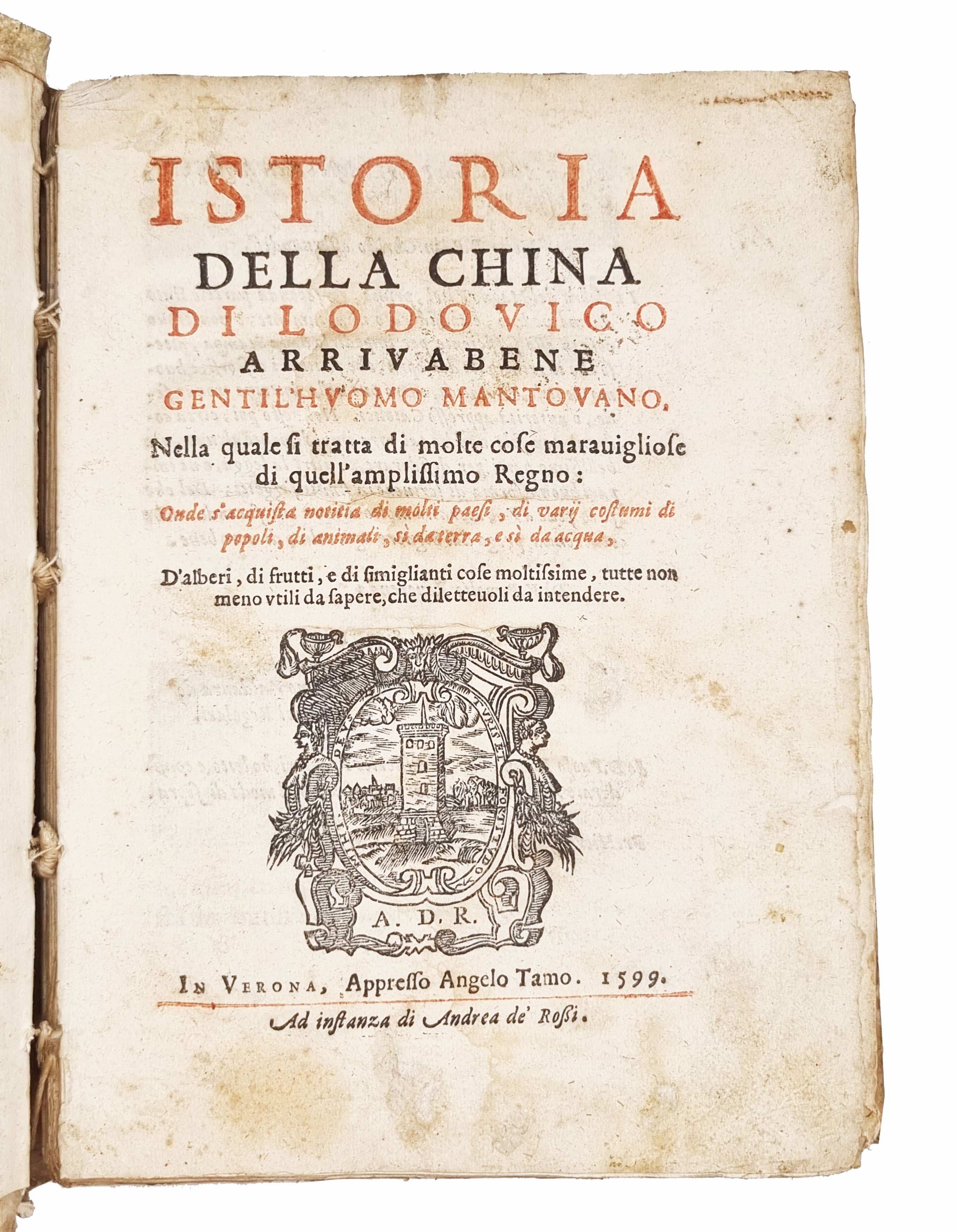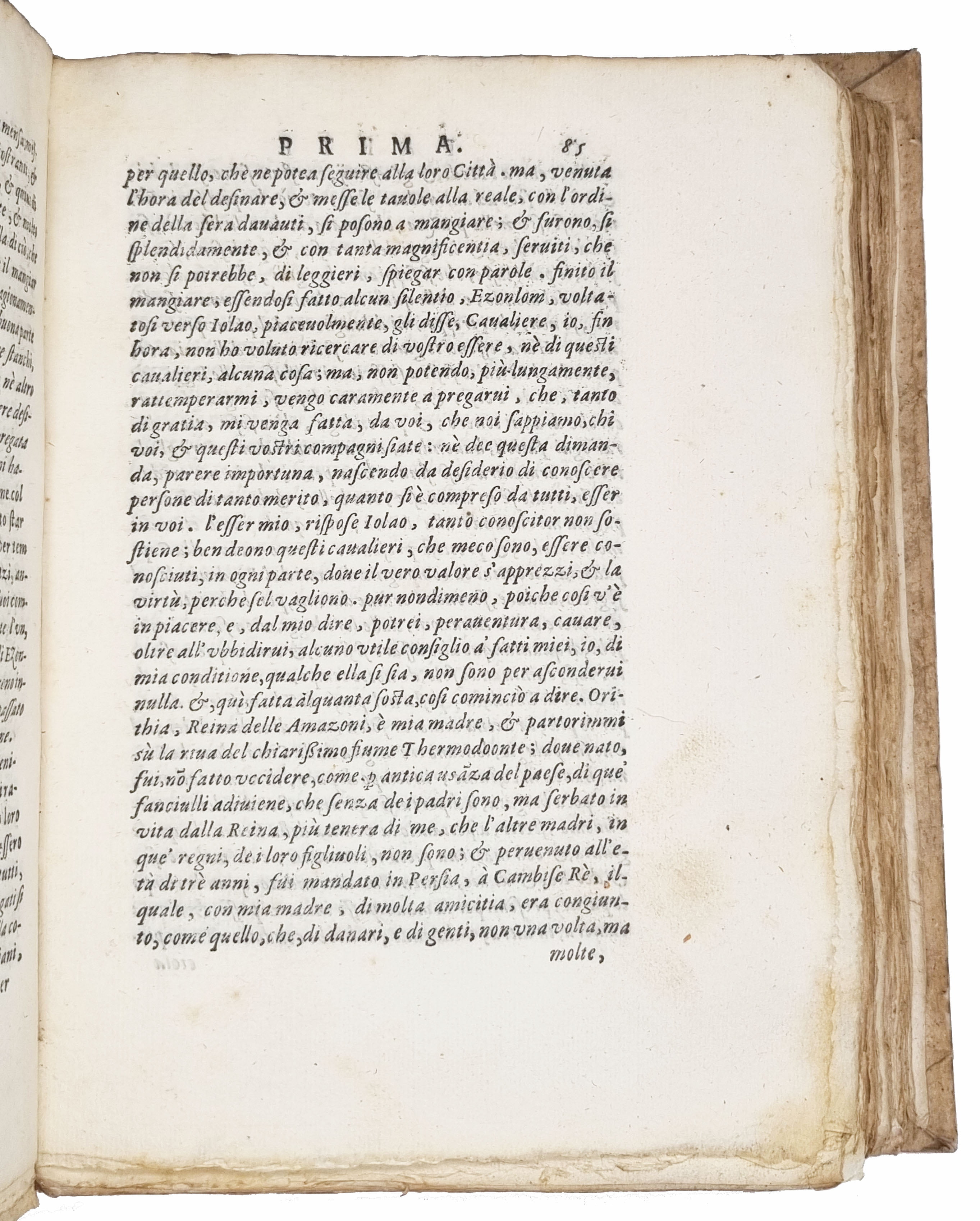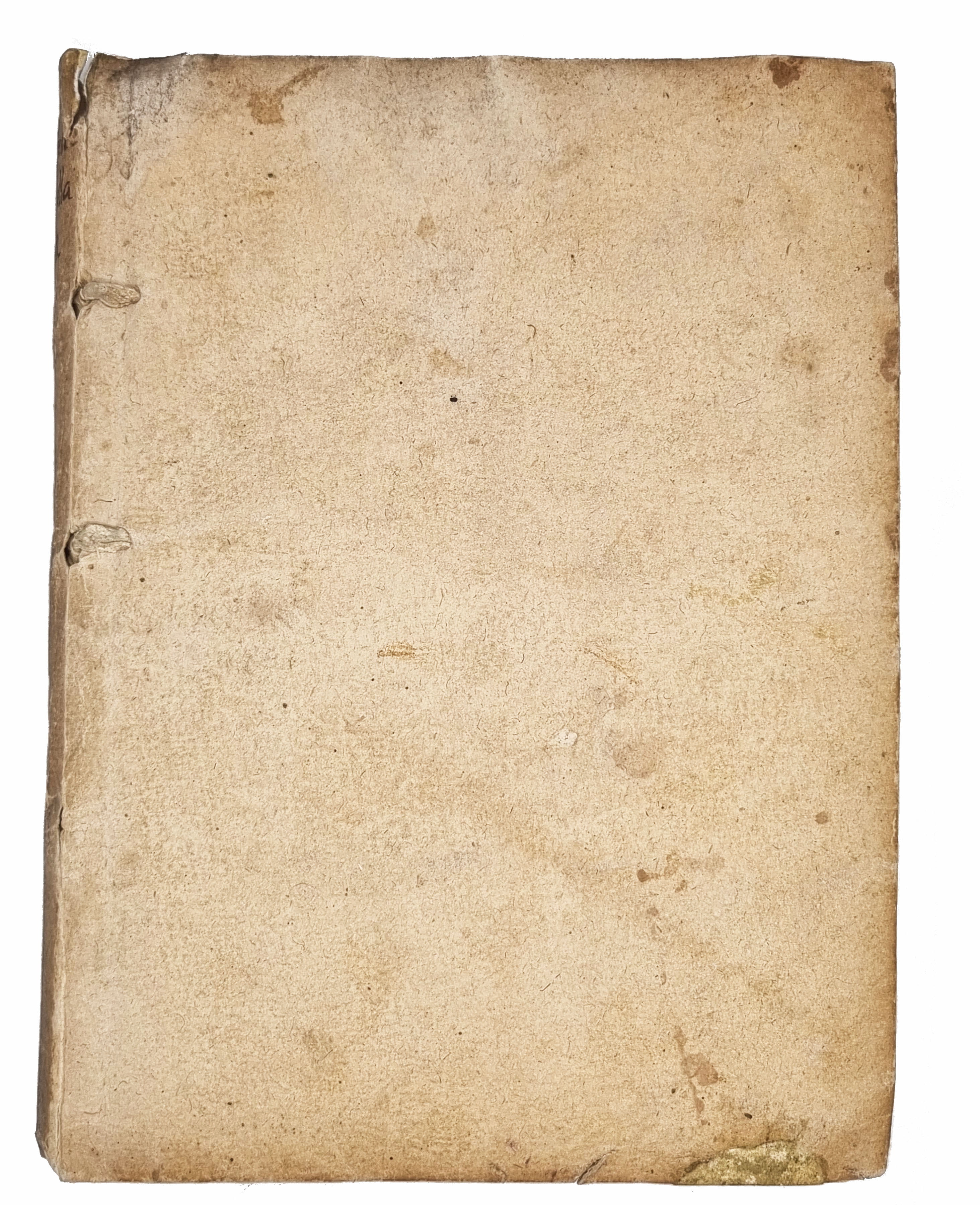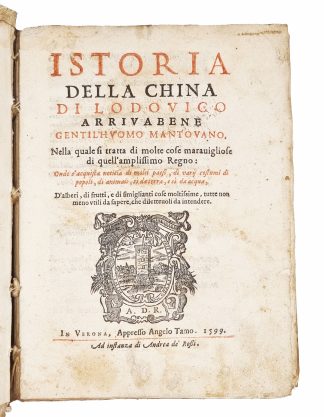ARRIVABENE, Ludovico.
THE FIRST NOVEL SET IN CHINA
Istoria della China
Verona, Angelo Tamo, 1599£2,950.00
4to, (xxiv) 578 (xxii). Italic and Roman letter, woodcut historiated initials, typographical ornaments. T-p slightly soiled, in red and black, printer’s device. Intermittent waterstains mainly to upper margins, some yellowing, light spotting and oil splashes to some blank margins, tiny early repairs to first and last 3 ll, deckle edges. A good, largely untrimmed copy in contemporary carta rustica, ms. title to spine and numbers to lower cover.
Second edition of the novel ‘Il Magno Vitei’ (first 1597), with a new wording of the title and the first preliminary quire reset. The first European romance set in China, Japan, South East Asia and entirely populated with Asian knights, this captivating tale was considered close enough to the historical reality, that the new title reads ‘History of China’. This is also the first European work in which China is celebrated as a model state.
The tour of the Japanese embassy from 1584 to 1586 to southern Europe and the numerous Jesuit missions to China sparked a new interest for Asia among Italian men of letters during the 1590s. ‘Magno Vitei’ (The great Vitei) is largely based on contemporary discourses, particularly Gonzales de Mendoza’s popular book on China, the Jesuit letterbooks and the travel collection of Giovanni Battista Ramusio. The tale revolves around the military conquests of Vitei, the great first king of China and exemplary ruler, against the Tartars, against rebels on Hainan Island, in Cochin-China and Cambodia, and on land and sea against the Japanese.
“Magno Vitei, a progenitor of the heroic-gallant romances of the seventeenth century, is a lengthy prose piece in which the wise and virtuous hero is celebrated. The locale is China and its neighbours in the East: Cochin-China, Champa, Cambodia, Siam, Pegu, Japan, Sumatra, India, and Tartary. China is depicted as the most virtuous nation yet known to mankind. Ezonlom, a governor of ancient China, is portrayed as an exemplar of the excellent prince and the perfect captain. The eldest of his sons, the great Vitei, is the most valiant and wisest of all knights and kings. […] Vitei excelled in all the arts of peace and war. He invented artillery and a marvellous war machine […] He found herbs for treating snake bites and invented the craft of printing. He discoursed learnedly on painting and sculpture as well as on the natural sciences. He produced recipes for the preparation of special foods for the better nutrition of horses and birds. He consulted the oracles both natural and divine and sagely predicted the outcome of battles and other events. […] The landscape of Arrivabene’s “Asia” is dotted with marvels, both real and fabulous. Animals figure prominently in his descriptions and great care is taken to speculate about the qualities and character of strange beasts and of their ability to reason. Horses, dogs, ants, bees, frogs, elephants, rhinoceroses, panthers, parrots, crocodiles, and other real animals compete for the reader’s attention with mermaids, Amazons, giants, unicorns, monsters, and fantastic creatures part animal and part man. Palaces, cities, provinces, and countries are described but at no greater length than miracles, demons, funerals, festivals, and the supposed virtues and powers of certain precious stones. The gods include a melange of Asian and Greek deities” (Lach)
Ludovico Arrivabene (c. 1530-1597) was born in Mantua, where he worked at the service of the Gonzaga. In 1556, he accompanied his father to Paris at the court of Caterina de’ Medici. After spending a few years in France, where he published a satirical dialogue against the French physicians Dubois and Rabelais, he returned to Italy. He spent the last years of his life as vicar general of the bishop of Mantua. The ‘Magno Vitei’, Arrivabene’s last work, was dedicated to Duke Francesco Maria della Rovere of Urbino, a collector of Eastern rarities, books and manuscripts.
USTC 811178; BM STC It. 16th century, p. 57; Graesse I, p. 228; Cordier, Bibliotheca Sinica I, p. 18. Not in Adams or Brunet. D.F. Lach, Asia in the Making of Europe, A Century of Wonder, Vol. II (1977)In stock





